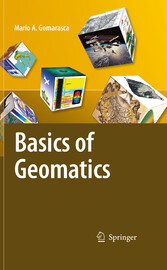Suchen und Finden

Basics of Geomatics
Geomatics is a neologism, the use of which is becoming increasingly widespread, even if it is not still universally accepted. It includes several disciplines and te- niques for the study of the Earth's surface and its environments, and computer science plays a decisive role. A more meaningful and appropriate expression is G- spatial Information or GeoInformation. Geo-spatial Information embeds topography in its more modern forms (measurements with electronic instrumentation, sophisticated techniques of data analysis and network compensation, global satellite positioning techniques, laser scanning, etc.), analytical and digital photogrammetry, satellite and airborne remote sensing, numerical cartography, geographical information systems, decision support systems, WebGIS, etc. These specialized elds are intimately interrelated in terms of both the basic science and the results pursued: rigid separation does not allow us to discover several common aspects and the fundamental importance assumed in a search for solutions in the complex survey context. The objective pursued by Mario A. Gomarasca, one that is only apparently modest, is to publish an integrated text on the surveying theme, containing simple and comprehensible concepts relevant to experts in Geo-spatial Information and/or speci cally in one of the disciplines that compose it. At the same time, the book is rigorous and synthetic, describing with precision the main instruments and methods connected to the multiple techniques available today.
Alle Preise verstehen sich inklusive der gesetzlichen MwSt.


















